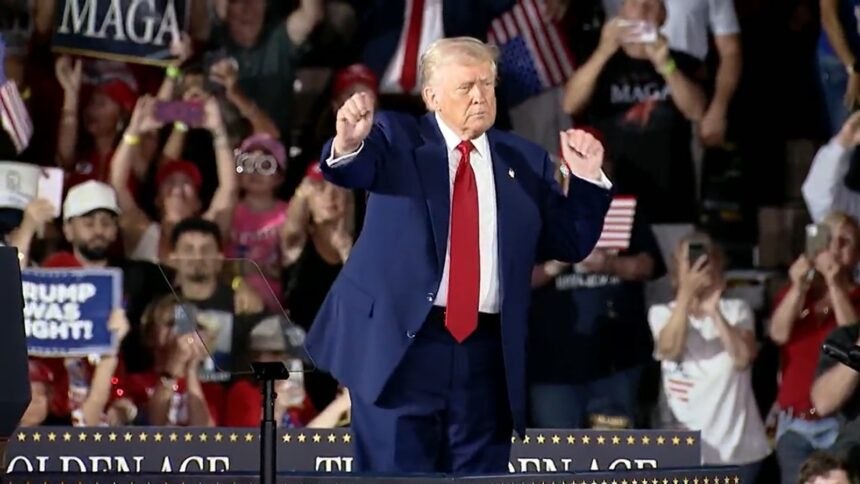The tariff concession announced by US President Donald Trump to encourage automobile manufacturing in America could mostly benefit Canada and Mexico, leaving India and other countries at a relative disadvantage due to the domestic content requirement announced by the White House Tuesday, an industry executive told The Indian Express.
The selective relief for the North American region assumes significance, as the US is the largest and fastest-growing auto component market for Indian exporters. “The talks for a bilateral trade agreement are ongoing, and we are expecting some relief, though the White House announcement on auto tariff concessions largely benefits Canada and Mexico under the United States-Mexico-Canada Agreement (USMCA), and not India. Canada and Mexico are already major suppliers of parts to the US,” the industry executive said.
Around a fifth of the Indian auto component sector’s revenue comes from exports, with 27 per cent of that directed to the US market alone, according to Crisil Ratings.
To prevent sudden disruption from the and parts, the US Tuesday modified an earlier order by announcing an offset amount for US imports over the next two years, along with reduced tariff rates if “domestic or USMCA content” is used in manufacturing within the US.
Citing national security concerns, the White House had last month said that auto parts would face 25 per cent tariffs from May 3, 2025. “…it offers an offset to a portion of tariffs for automobile parts used in US-assembled vehicles, equal to 3.75 per cent of the Manufacturer’s Suggested Retail Price (MSRP) of a manufacturer’s US production for the year from 3 April 2025 to 30 April 2026, and 2.5 per cent for the year from 1 May 2026 to 30 April 2027,” a White House statement said.
These percentages reflect the duty payable when a 25 per cent tariff is applied to 15 per cent of the value of a US-assembled vehicle in the first year, and to 10 per cent in the second year, according to the White House.
“All other automobile imports will remain subject to the 25 per cent tariff. For instance, if a manufacturer builds a car in the US with 85 per cent ‘US or USMCA content’, the manufacturer will not owe tariffs on that vehicle’s production in the first year,” the White House said.
However, if a manufacturer builds a vehicle in the US with 50 per cent “US or USMCA content” and 50 per cent imported components, they would pay tariffs on only 35 per cent of the imported portion in the first year, the White House added.
Crisil Ratings had said last month that the US tariffs would dent the operating margins of major auto parts manufacturers by 125–150 basis points due to the Trump administration’s move to impose a 25 per cent tariff on key components, including engines, transmissions, powertrains, and electrical parts, from May 2025.
“…would compress the operating margins of Indian component manufacturer-exporters by 125–150 basis points from the current 12–12.5 per cent range, assuming full absorption of the tariffs,” Crisil estimated.
However, select automotive component manufacturers with US-based facilities may see offsetting gains from improved capacity utilisation. The US also plans to expand tariffs to cover more components if necessary, though the additional impact is expected to be limited, the agency said.
India’s auto component exports — including drive transmission, steering, and engine components — reached $21.2 billion in FY24, reflecting 5.5 per cent growth. This was largely driven by robust demand from North America and Europe, which each accounted for nearly 32 per cent. Other key markets include Asia and West Asia. However, overall growth remained flat compared to the previous year.
A query emailed to the Commerce and Industry Ministry remained unanswered till the time of publication.
Auto component exports to the US alone touched around $7 billion, official data shows. However, the significance of the US market lies in the scale of the opportunity. In 2024, Americans purchased roughly 16 million cars, SUVs, and light trucks — half of which were imports. “Of the other 8 million vehicles assembled in the US, the average domestic content is conservatively estimated at only 50 per cent, and is likely closer to 40 per cent. Thus, of the 16 million cars bought by Americans, only 25 per cent of the vehicle content can be categorised as ‘Made in America’. The United States’ trade deficit in automobile parts reached $93.5 billion in 2024,” a White House fact sheet stated.








